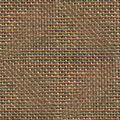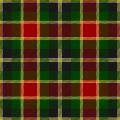Related Research Articles

Textile is an umbrella term that includes various fiber-based materials, including fibers, yarns, filaments, threads, different fabric types, etc. At first, the word "textiles" only referred to woven fabrics. However, weaving is not the only manufacturing method, and many other methods were later developed to form textile structures based on their intended use. Knitting and non-woven are other popular types of fabric manufacturing. In the contemporary world, textiles satisfy the material needs for versatile applications, from simple daily clothing to bulletproof jackets, spacesuits, and doctor's gowns.

Suede is a type of leather with a fuzzy, napped finish, commonly used for jackets, shoes, fabrics, purses, furniture, and other items. The term comes from the French gants de Suède, which literally means "gloves from Sweden".

Muslin is a cotton fabric of plain weave. It is made in a wide range of weights from delicate sheers to coarse sheeting. It gets its name from the city of Mosul, Iraq, where it was first manufactured.

Moleskin is a heavy cotton fabric, woven and then shorn to create a short, soft pile on one side. The feel and appearance of its nap is suede-like, less plush than velour and more like felt or chamois. The word is also used for clothing made from this fabric. Clothing made from moleskin is noted for its softness and durability. Some variants of the cloth are so densely woven as to be windproof.

Flannel is a soft woven fabric, of various fineness. Flannel was originally made from carded wool or worsted yarn, but is now often made from either wool, cotton, or synthetic fiber. Flannel is commonly used to make tartan clothing, blankets, bed sheets, and sleepwear.

Dyeing is the application of dyes or pigments on textile materials such as fibers, yarns, and fabrics with the goal of achieving color with desired color fastness. Dyeing is normally done in a special solution containing dyes and particular chemical material. Dye molecules are fixed to the fiber by absorption, diffusion, or bonding with temperature and time being key controlling factors. The bond between dye molecule and fiber may be strong or weak, depending on the dye used. Dyeing and printing are different applications; in printing, color is applied to a localized area with desired patterns. In dyeing, it is applied to the entire textile.
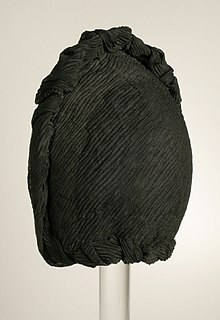
Crêpe, also spelled crepe or crape is a silk, wool, or synthetic fiber fabric with a distinctively crisp and crimped appearance. The term "crape" typically refers to a form of the fabric associated specifically with mourning. Crêpe was also historically called "crespe" or "crisp".

Ninon is a lightweight, sheer fabric made with plain or leno weaving, it is a suitable material for curtains, evening wear and lingerie. Ninon is made with variety of filament yarns such as polyester, silk, rayon or nylon.

Broadcloth is a dense, plain woven cloth, historically made of wool. The defining characteristic of broadcloth is not its finished width but the fact that it was woven much wider and then heavily milled in order to shrink it to the required width. The effect of the milling process is to draw the yarns much closer together than could be achieved in the loom and allow the individual fibres of the wool to bind together in a felting process, which results in a dense, blind face cloth with a stiff drape which is highly weather-resistant, hard wearing and capable of taking a cut edge without the need for being hemmed.

Organdy or Organdie is a kind of sheer fabric. It is a lightweight balanced plain weave cotton with features of sheerness and crispness.
Gazar is a silk or wool plain weave fabric made with high-twist double yarns woven as one. Gazar has a crisp hand and a smooth texture.

Dornix, also known as dornicks and darnacle, is a wool and linen fabric, first used in the 16th century.
Swanskin is a close woven twill-weave flannel cloth for work clothes. It was used by fishermen and laborers. It is employed also as Ironing cloth to support on ironing tables.
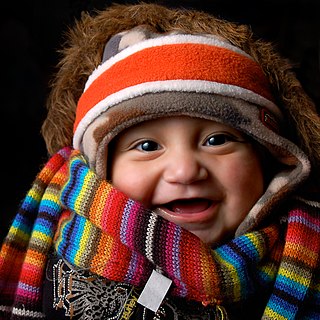
Hand feel is the property of fabrics related to the touch that expresses sensory comfort. It refers to the way fabrics feel against the skin or in the hand and conveys information about the cloth's softness and smoothness. Hand feel is an estimated and subjective property of different fabrics, but nowadays, hand feel could be measured and assessed statistically.
Huckaback fabric or Huck is a type of toweling cloth with a bird's eye or honeycomb pattern. It is a loosely woven fabric made of cotton or linen with Huckaback weave.
Seerhand muslin (Seerhand) was a plain weave thin cotton fabric produced in the Indian subcontinent.
Bure was an old heavy woolen woven cloth that has undergone many changes since the Middle Ages. Hence, It was called with many names such as Bura, Burel, Burian, Burly, Burlesque, Burratto, Bournous, Burratine.
Silesia was a thin twilled woven cloth made of linen or cotton. The term denoted a wide range of fabric grades from greige goods to dyed and finished cloth. Silesia was used for various linens, for lining clothes, and in window blinds. Cotton Silesia was calendered to obtain a gloss finish.

A gig-mill was type of raising machine that used teasels to produce a nap on cloth. Examples of the results of gigging are woolen fabrics such as chinchilla, beaver cloth, and melton. The process involved gradual teasing of the surface to raise the nap.
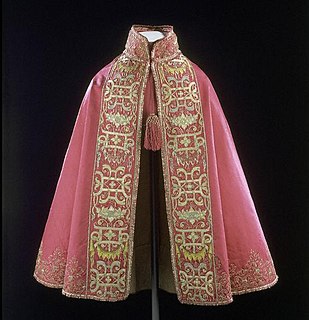
Aesthetics in textiles is one of the basic concepts of serviceability of textiles. It is determined by the perception of touch and sight. Aesthetics imply the appearance and attraction of textile products; it includes the color and texture of the material. It is a statement about the end user (consumer) and the target market. When combined with fabric construction, the finish of the clothing material, garment fit, style, and fashion compatibility, colours create an aesthetic comfort. All of these elements work together to satisfy our visual perception. Aesthetics incorporates the role of evaluation also.
References
- 1 2 MATHEWS, KOLANJIKOMBIL (2017). Encyclopaedic Dictionary of Textile Terms: Four Volume Set. Woodhead Publishing India PVT. Limited. p. 38. ISBN 978-93-85059-66-7.
- ↑ Training, University of Pittsburgh Research Bureau for Retail (1936). Manuals on Merchandise Information and Selling Technique. p. 8.
- ↑ Mills, Betty J. (1985). Calico Chronicle: Texas Women and Their Fashions, 1830–1910. Texas Tech University Press. p. 181. ISBN 978-0-89672-128-9.
- ↑ Fairchild's dictionary of textiles. Internet Archive. New York, Fairchild Publications. 1959. pp. 12, 13.
{{cite book}}: CS1 maint: others (link)
